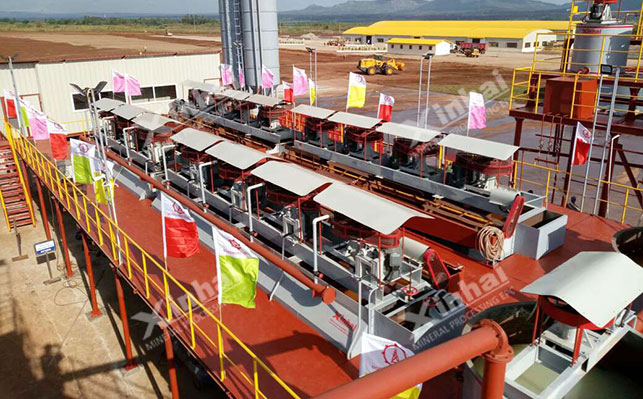The primary methods for antimony ore dressing include manual selection, gravity separation, and flotation. Among these, flotation is the most widely used method in ore dressing plants, followed by manual selection, while gravity separation is less common. Some antimony ore dressing plants adopt a single flotation process, but most zinc ore dressing plants use combined processes, such as manual selection-flotation and manual selection-gravity separation-flotation.

Manual Selection of Antimony Ore: Manual selection of antimony ore is based on the color, luster, and shape differences between antimony minerals and gangue. This method is primitive and labor-intensive but can produce large blocks of high-quality antimony concentrates, reducing ore dressing costs and energy consumption. Manual selection of antimony ore is typically done on a conveyor belt device or directly in the mine or pit.
Gravity Separation of Antimony Ore: Gravity separation is suitable for most antimony ore dressing, as antimony minerals are dense and coarse-grained, making them easy to separate from gangue using gravity methods. Whether it is a single sulfide antimony ore or a mixed sulfide-oxide antimony ore, gravity separation conditions are favorable. Gravity separation is cost-effective, allowing the separation of a large amount of qualified coarse concentrates and the rejection of a considerable amount of waste rock. The main gravity separation equipment for antimony ore includes jig machines and, sometimes, shaking tables.
Flotation of Antimony Ore: Flotation is the primary ore dressing method for antimony, as sulfide antimony minerals are easily floated. The commonly used process involves first using lead salts as activators for stibnite, and sometimes copper salts or a combination of lead and copper salts. Subsequently, a collector is used for flotation, with commonly used collectors being butyl xanthate or a mixture of shale oil and ethyl thio carbamate. The foaming agent used is pine oil or No. 2 oil. On the other hand, antimony oxides are difficult to float, and gravity separation is mainly employed for separation.
Antimony Ore Dressing Process: Antimony ores can be classified according to their processing:
Mainly composed of pure stibnite, with minimal content of other metallic minerals.
Stibnite ores containing gold, often in the form of arsenopyrite. The separation of antimony and gold is a crucial step in ore dressing.
Mixed oxide-sulfide ores without arsenic but with relatively high secondary oxide antimony minerals. Currently, recovery of oxide ores can only be achieved through gravity separation.
Ores containing minerals like tungsten, gold, and arsenic, but with high gold content, where scheelite can be recovered as a byproduct.
Ores with tin, lead, zinc, arsenic, etc., where antimony appears in the form of brittle sulfantimonides like berthierite and jamesonite.
Ores with high lead content and mercury. The primary minerals in these ores are stibnite and cinnabar.
Characteristics of Antimony Ore Dressing: The current technology does not allow for the recovery of antimony oxide ores using flotation. Manual selection or gravity separation methods are typically employed for recovery. The floatability of stibnite is pH-dependent, being best in acidic media and poor in alkaline media due to the alkaline solubility of the mineral surface. Activation of stibnite is often necessary in neutral pulps. Lead nitrate is widely used as the activator, and sometimes, a mixture of copper sulfate and lead nitrate is used. Lead is considered a harmful impurity in antimony concentrates, and sulfuric acid can be used instead of lead nitrate to ensure concentrate quality. Acidic conditions are favorable for stibnite flotation, imposing higher demands on equipment.
Applications of Antimony: Antimony is primarily used in the production of antimony products. After being extracted and developed, antimony is often utilized as a component in other alloys, mainly to increase the strength and hardness of the alloy. For instance, it is used in bearing alloys, battery grids, cable sheathing, solder, printing alloys (lead type), and bullets. Additionally, high-purity antimony is a dopant in semiconductor germanium and silicon. Antimony also serves as a flame retardant and a key raw material for white pigments in paint and enamel, known as antimony white. Antimony trioxide (Sb2O3) is used in the production of matches and flame retardants.